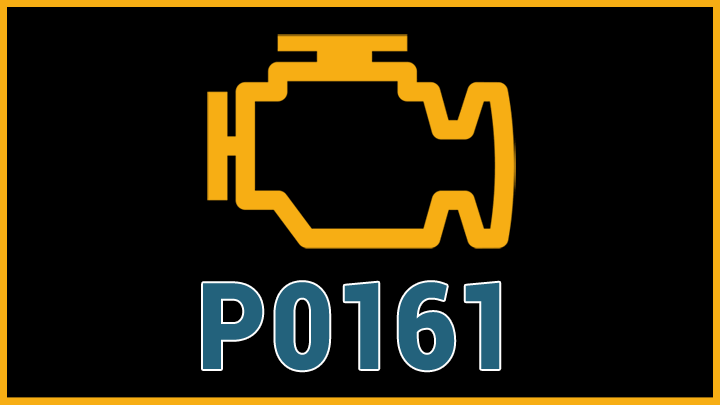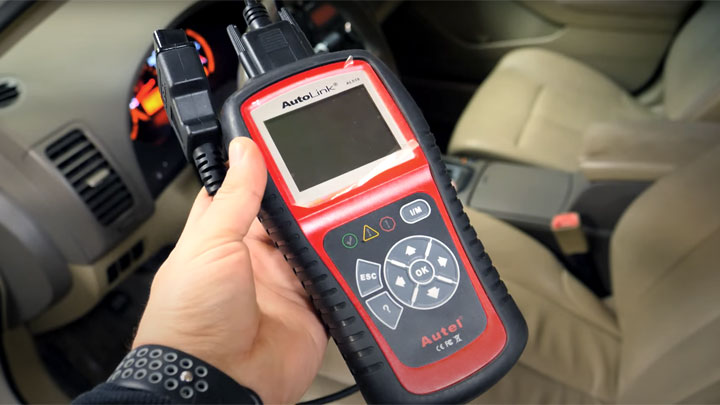Last Updated on November 7, 2022
Today’s vehicles rely upon an intricate web of electronic controls to increase operating efficiency, and to reduce emissions output. Such technology initially arose in the 1970s, under regulatory pressure from the US government, in a bid to reduce the nation’s carbon footprint.
Modern vehicles are now able to monitor their own performance, thereby making on-the-fly adjustments to increase efficiency. However, reaching this point was no simple task, and required the introduction of many new components, all aimed at cutting unnecessary exhaust output. One such example is the O2 sensor, which plays a pivotal role in determining if a vehicle is running “rich” or “lean”.
Unfortunately, much like any electrical component, O2 sensors are prone to eventual failure, or any number of circuit-related issues. When this occurs, a diagnostic trouble code, such as DTC P0161, is stored by the affected vehicle’s PCM/ECM.
Code P0161, as well as all other O2 sensor DTCs, serve to identify an issue that must be remedied to restore a vehicle to peak operating efficiency.
Read on to learn more about DTC P0161, as well as how to remedy such an issue, should it arise in the future.
What Does Code P0161 Mean?
DTC P0161 refers to an operational issue with a vehicle’s #2 oxygen sensor (bank 2). This sensor is known as the heated oxygen sensor and is located downstream of a vehicle’s catalytic convertor. The #2 (bank 2) O2 sensor’s job is to determine the oxygen content of an engine’s exhaust gases.
Data collected by the #2 (bank 2) oxygen sensor is used by a vehicle’s PCM when determining fuel trim values. Therefore, any O2 sensor issues can lead to less than optimal engine operation, and compromised fuel efficiency.
The #2 oxygen sensor (bank 2) is heated during its duty cycle, thereby allowing for accurate oxygen content measurement. Most O2 sensors reach their predetermined temperature thresholds within 20-60 seconds of startup, allowing for near instantaneous feedback.
DTC P0161 is indicative of an issue in the heater circuit of a vehicle’s #2 (bank 2) oxygen sensor. More specifically, this trouble code refers to a sudden increase in resistance within the affected circuit. Alternatively, an open condition within the #2 (bank 2) oxygen sensor circuit can also be to blame.
In any event, a #2 (bank 2) oxygen sensor’s ability to provide an accurate exhaust measurement will be compromised, in the event of heating circuit failure. As a result, a vehicle’s emissions output is likely to increase, until the underlying issue is remedied.
Related: Code P0030, Code P0031, Code P0154, Code P0155
Symptoms of Code P0161

In many cases, the sudden illumination of a check engine light will serve as the only indication of DTC P0161. Unlike many DTCs, P0161 is not often accompanied by a laundry list of additional symptoms.
Instead, a vehicle’s emissions output is likely to increase slightly, though this will not be outwardly discernable to most motorists.
Causes of Code P0161
There are several potential causes of diagnostic trouble code P0161. While the exact cause of this code often varies from one particular model of vehicle to the next, a handful of issues tend to account for a significant percentage of these issues.
The following are the most common causes of DTC P0161.
- Open O2 sensor heater power circuit
- Open O2 sensor heater ground circuit
- O2 sensor contamination
- Faulty O2 sensor
- Failed PCM (powertrain control module)
Is Code P0161 Serious?

In most instances, DTC P0161 is not viewed as being overly serious in nature.
This code produces no drivability related concerns and would go largely unnoticed by most motorists if it were not for the sudden illumination of their vehicle’s check engine light. Therefore, it is quite likely that many vehicles are driven annually with an active P0161 DTC, to no issue.
However, DTC P0161 can be cause for concern for those who reside in locations where annual emissions testing is mandated. Since this code is emissions-based in nature, the presence of DTC P0161 will likely result in a failed examination.
Regardless of its severity, the root cause of DTC P0161 should be diagnosed and remedied as soon as possible. This prevents any further issues from arising and restores your vehicle to peak operating efficiency.
How to Fix Code P0161
The following steps can be used to guide you through the process of diagnosing and repairing the root cause of your vehicle’s P0161 trouble code. As always, consult manufacturer-specific service literature for your particular vehicle, before attempting any in-depth repair.
#1 – Check for Additional DTCs
Before beginning the diagnostic process, check for the presence of additional active DTCs. Thoroughly diagnose each additional code that is present, before proceeding.
#2 – Visually Inspect O2 Sensor
Begin by carefully inspecting the O2 sensor in question, along with any corresponding wires. Obvious damage to an O2 sensor will warrant replacement, while wiring damage will necessitate repair.
#3 – Check Sensor Resistance
If no damage is apparent under visual inspection, it will be necessary to check the resistance of the sensor itself. This can be done with the use of a digital multimeter.
All values should be compared to acceptable ranges provided by a vehicle’s manufacturer. Out of spec readings will ultimately warrant sensor replacement.
#4 – Check Circuit Resistance
If the affected O2 sensor was found to be within specification, it will be necessary to test the remaining portion of the circuit for excess resistance, or alternatively, for an “open” condition.
Doing so will require isolation of each wire within the circuit, from the vehicle’s PCM. Again, all resistance measurements should be compared to those provided by the vehicle’s manufacturer.
#5 – Reflash/Replace PCM if Necessary
If all previously taken resistance measurements have fallen within acceptable ranges, then a vehicle’s PCM becomes suspect. In certain instances, a vehicle’s PCM can simply be “reflashed”, while other occasions call for PCM replacement.
In any event, factory-specific service literature should be consulted before moving forward.






Hello I have 2007 Ford Expedition have Code P0060 puter new oxig sensor and new catalytic converters code continue ?
Verify that you changed the correct O2 sensor and that the wiring to the sensor is OK. Could be the catalytic converters, but it’s hard to say without more testing.